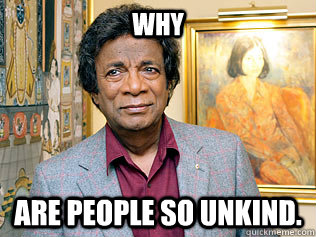mollwollfumble said:
monkey skipper said:
sarahs mum said:
I was thought dumping on the info contained in the article. But in the era I grew up some people said children don’t feel pain like adults do.
I remember crushing my wrist in a fall. No painkillers. Breaking my finger. No Pain killers.
The bones are still growing together and there is more flexibility but there is more harm from hitting than the pain and that the anxiety of going to be hit and the anxiety of wondering how painful and the duration and extent of the event. Not many good chemicals going through the mind and body of a developing brain and young person.
Is there a recognised scale of violence?
what scale of violence
scales across society?
individual scale level of abuse
https://en.wikipedia.org/wiki/Conflict_tactics_scale
The revised CTS2 measures a total of 39 behaviors. Each of these behaviors, or “items”, is divided into five categories: “Negotiation”, “Psychological Aggression”, “Physical Assault”, “Sexual Coercion” and “Injury.” Each of the five categories is then further subdivided into two subscales: “Negotiation” is subdivided into “Cognitive” and “Emotional”, while the other four categories are subdivided into “Minor” and “Severe.” There are six items in “Negotiation”, eight in “Psychological Aggression,” twelve in “Physical Assault,” seven in “Sexual Coercion,” and six in “Injury.”
Examples from each category include:
Negotiation: “I showed I cared about my partner even though we disagreed” (emotional); “Suggested a compromise to a disagreement” (cognitive).
Psychological Aggression: “Shouted or yelled at my partner” (minor); “Threatened to hit or throw something at my partner” (severe).
Physical Assault: “Slapped my partner” (minor); “Kicked my partner” (severe)
Sexual Coercion: “Insisted on sex when my partner did not want to (but did not use physical force)” (minor); “Used force (like hitting, holding down, or using a weapon) to make my partner have sex” (severe)
Injury: “Had a sprain, bruise, or small cut because of a fight with my partner” (minor); “Needed to see a doctor because of a fight with my partner, but I didn’t” (severe).
CTS2 questions are presented in pairs. The first question in the pair asks respondents to indicate how often they carried out each item, in a range from “never” to “more than 20 times,” in the referent period. The second asks how often the partner carried out each item within the same referent period. Default referent periods are usually 12 months, but other spans of time can be used. Subscales measuring the degree of severity of “less severe” and “more severe” behaviors are included for all CTS scales, “based on the presumed greater harm resulting from acts in the severe subscale.” The severity of behaviors can also be measured by analyzing the frequency of the acts and by whether an injury was reported by the respondent.
I guess each State in Australia would have something similar?
